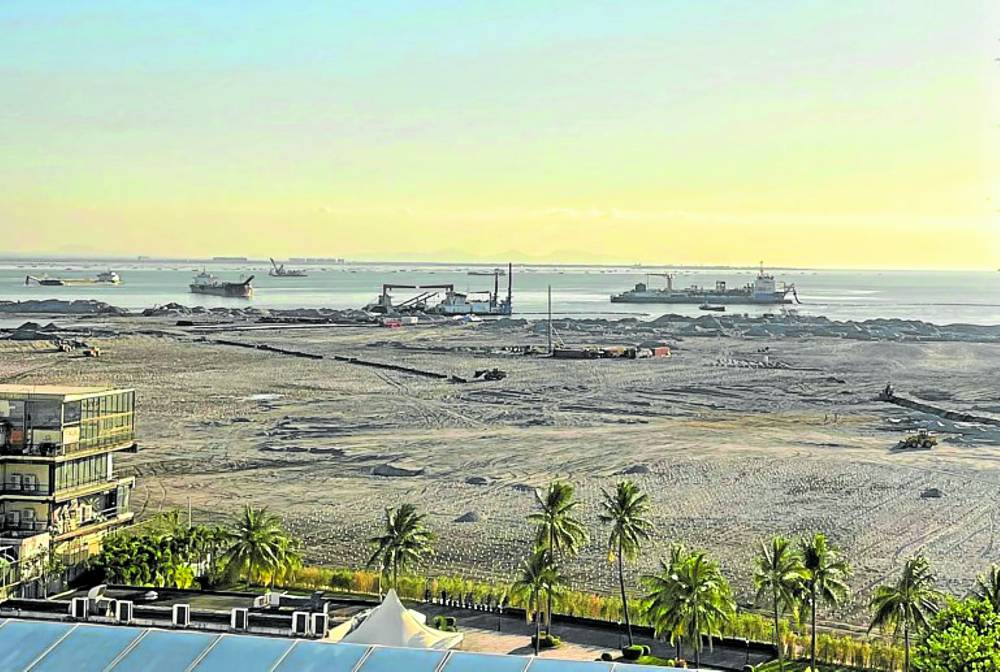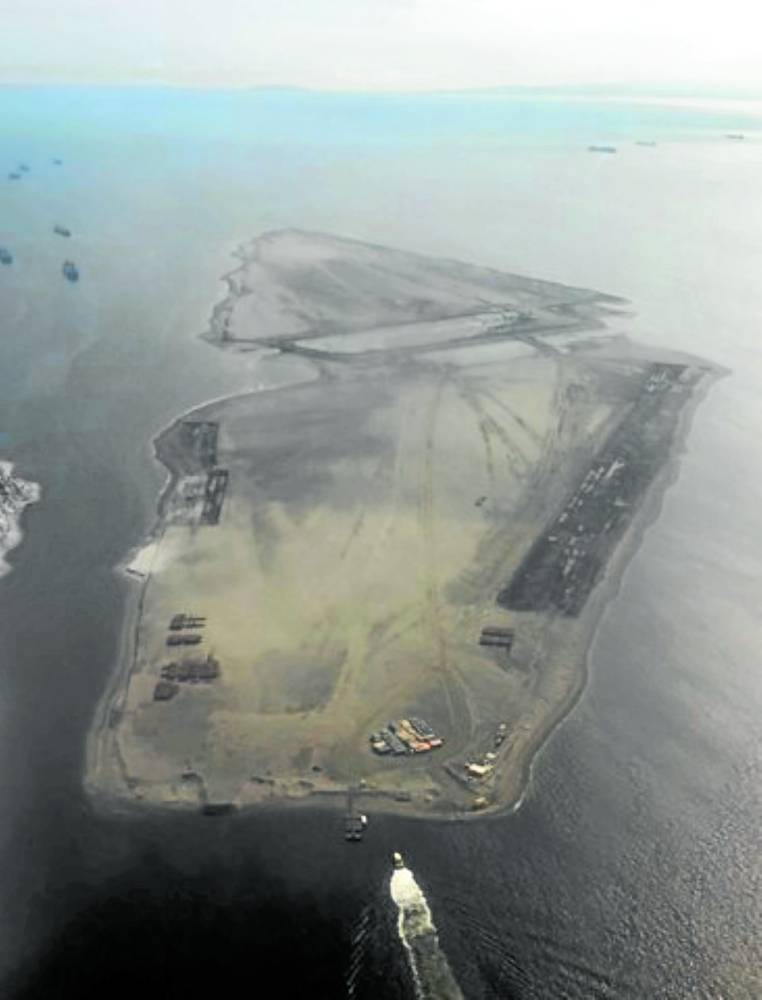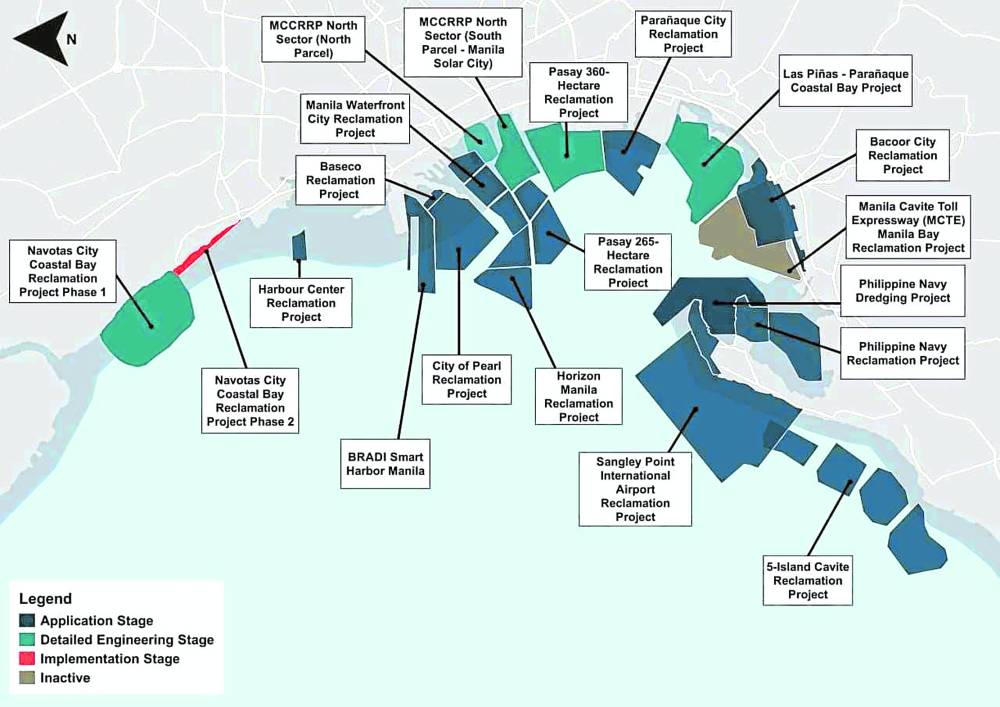
One afternoon in the early 2000s, when a multisectoral protest was ongoing against the planned reclamation on Manila Bay from the Cultural Center of the Philippines (CCP) to the United States Embassy, an elderly lady was documenting the iconic dusk.
It was nearing sunset when that old lady got out of her car while her driver brought out a folding chair, an easel and a stretched canvas.
The lady then “quietly sat down and started to paint as the yellow, orange, red and blue sky palette of our famed sunset went from dark to light.”
When the lady was approached while doing “en plein aire memento to keep that treasured memory,” she “quietly whispered that this beautiful daily scene will disappear once the reclaimed area gets populated by gambling structures.”
That lady was Betsy Westendorp de Brias, the late Spanish visual artist who rose to fame in the Philippines for her atmosferografias and portraits.
This poignant story was shared with Lifestyle by Tats Manahan, now chairperson of the Heritage Conservation Society (HCS) and corporate secretary of the International Council on Monuments and Sites-Philippines.
Now, after more than two decades, the issue of reclamation in Manila Bay continues, although the one that became a subject of protests led by the HCS in the early 2000s did not materialize, at least as of now.
In August, President Marcos Jr., suspended temporarily all 13 approved reclamation projects in Manila Bay, stretching from Cavite to the National Capital Region.
Of the 13, only three are either underway or in the preparatory stage—Pasay Harbor City Project, the 390-hectare project also in Pasay, and the Manila Waterfront City Reclamation Project.
Important site

These projects were met with protests from various environmental groups, citing the negative environmental impacts these will create.
Alongside these environmental organizations are cultural groups which cite the bay’s significance in the history and cultural heritage of the country.
“Manila Bay is part of our heritage, part of our history,” said Manila resident and heritage advocate Chiqui Mabanta.
Mabanta adds that “famous battles were fought there; famous paintings were painted, and it has already been minimized to a small area and it is all we have left. Can’t they just leave it alone?”
She said that the new city that will be developed as a result of the reclamation will be soulless.
“Soul is what gives a city character. Manila has soul. New cities do not,” she said.
“The new city will be like any other city but Manila, however old or rundown, has soul and heart. My shout out to those in power: Bring back the glory of Manila, and not with shiny new buildings.”
Apart from obstructing the scenic views of the bay and damaging possible underwater archaeological sites, the reclamations, she said, will possibly cause land subsidence, liquefaction caused by earthquakes and storm surges which will affect both the natural and the built environments.
Mabanta appealed to investors to protect heritage buildings and sites, not only in Manila but in the country in general.

“Manila has been around for all to see, both rich and poor, but this new ‘smart city’ will be servicing mainly rich people who can afford to live there and make use of the amenities, while the original city of Manila will just become more decrepit and neglected,” she said.
“Manila Bay is one of the few wonders of nature left in this concrete jungle,” she added.
Meanwhile, Manahan’s view reflects those of Mabanta, saying these projects will just aggravate coastal flooding and affect the livelihood of fishermen which, in effect, will result in the rise of fish prices and loss of maritime biodiversity.
She mentions a study made in Xiamen, China that “a coastal reclamation zone is prone to storm tide-induced coastal flooding, due to its low-lying elevation and dense socioeconomic and physical exposure, and the compound effects of rapid urbanization and climate change are projected to exacerbate the impacts of coastal floods.
“Also, who knows what hidden species of pollutants may surface? Impact studies show that there too is this great possibility,” she added.
Protected by law

The National Historical Commission of the Philippines (NHCP), through its chairman, Emmanuel Calairo, told Lifestyle that its board, “through NHCP Resolution No. 19 s. 2012, declared the Manila waterfront stretching from the Del Pan Bridge to the CCP a National Historical Landmark.”
“The Commission then extended the scope of the said declaration, including the waters of the Manila Bay from the shoreline to the horizon, through Resolution No. 1, s. 2018,” Calairo added.
The recently passed new heritage law, Republic Act No. 11961, states that properties or sites declared National Historical Landmarks are under the “Grade 1 Level” of cultural or natural properties and should receive “priority government protection” from natural and man-made disasters as well as from “modification or demolition resulting from all government projects.”
Both the National Commission for Culture and the Arts and the National Museum of the Philippines have not released any statements yet on the issue.
The reclamation on Manila Bay is nothing new, as these projects were started during the Spanish period with the reclamation of the shore outside the walls of Intramuros to form the Paseo de Santa Lucia or de Maria Cristina (later Malecon, now Bonifacio Drive).
But massive ones started during the American period with the construction of Cavite (later Heiwa and Dewey, now Roxas Boulevard) stretching from the end of Bonifacio Drive to Pasay, the Port Area, portions of Luneta and adjacent areas, such as the site of the open field and Quirino grandstand, Manila Hotel, Army Navy Club building which is now Rizal Park Hotel, Manila Elks Club or Museo Pambata building and the United States Embassy compound.
In the 1980s, Roxas Boulevard was extended from Parañaque to Bacoor in Cavite, opening as the Manila-Cavite Expressway in 1985.
This resulted in the reclamation of the coastal areas of Parañaque, Las Piñas, and Bacoor and the death of the salt-making industries in these towns.
From the second half of the 1960s, the area of the sea fronting the Bangko Sentral ng Pilipinas complex to Buendia was reclaimed and became the CCP Complex.
This area was later expanded to host the Government Service Insurance Service and World Trade Center buildings.
In the 1990s, during the term of President Fidel Ramos, a huge area of the bay fronting Pasay and Parañaque areas were reclaimed and is now a bustling residential and commercial center.
Perhaps the most popular of these reclamations, particularly in recent history, is the also controversial Manila Dolomite Beach in Manila’s Ermita district, which was completed in 2022.
The project, which used crushed dolomite quarried in Cebu province, was part of the so-called Manila Bay Rehabilitation Program of the Duterte administration. —CONTRIBUTED











































